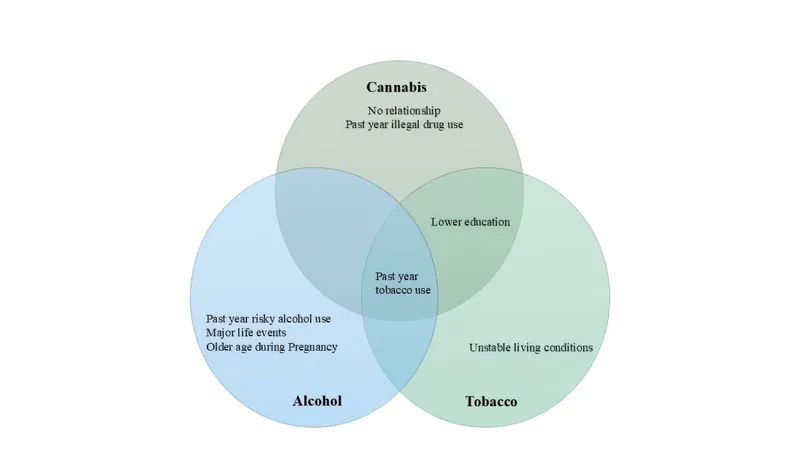
Unveiling the Hidden Dangers: Pregnant Women and Substance Use Risks
2024-11-19
Author: Arjun
Introduction
In an alarming revelation, a recent study highlights the significant risks associated with substance use during pregnancy, including tobacco, alcohol, cannabis, and illicit drugs. These substances can lead to severe outcomes such as stroke, miscarriage, preterm birth, low birth weight, and neurodevelopmental issues in infants. Data from the 2020 National Survey on Drug Use and Health reveals that over 20% of pregnant women in the United States admit to using one or more of these substances.
Development of the PROMOTE Prenatal Screener
Recognizing the urgent need to identify those most at risk, researchers from Stony Brook University have developed a groundbreaking screening tool called the PROMOTE Prenatal Screener. This innovative assessment allows healthcare providers to better understand the vulnerabilities of expectant mothers regarding substance use.
Research and Findings
Led by Heidi Preis, MSW, Ph.D., an Assistant Professor in the Department of Obstetrics, Gynecology, and Reproductive Medicine at Stony Brook’s Renaissance School of Medicine, the study meticulously examined psychological, social, and economic factors that could predispose pregnant women to substance use. Preis emphasizes, “By implementing the PROMOTE screener at the beginning of prenatal care, healthcare professionals can effectively identify a patient’s psychosocial needs, enabling timely interventions.”
Components of the PROMOTE Tool
The PROMOTE tool comprises 18 essential questions that explore various vulnerabilities, including educational background, financial stability, living conditions, and mental health status. This holistic approach is vital, as traditional methods of screening have often been inadequate in prenatal settings.
Analysis of Expectant Mothers
In their study, researchers analyzed the medical records of 1,842 expectant mothers who completed the PROMOTE screener during their initial prenatal appointments at a New York State health system clinic. Their findings were striking: 10.2% of participants reported using at least one substance during their pregnancies, with 7.2% smoking tobacco, 2.7% using cannabis, and 2.4% consuming alcohol.
Demographic Insights and Conclusions
The results indicated specific demographics more prone to substance use. Women with limited education showed a higher tendency to smoke tobacco, while single individuals were significantly more likely to use cannabis. Additionally, those who encountered significant life stressors were primarily found to consume alcohol during pregnancy.
As this pivotal research unfolds, the implications are clear: addressing the health needs of vulnerable pregnant women early on can lead to better outcomes for both mother and child. With more comprehensive tools like the PROMOTE screener becoming accessible, healthcare providers have a vital opportunity to combat the alarming statistics surrounding substance use in pregnancy.
Call to Action
Are we prepared to make a change? Join the discussion on how we can protect the next generation!


 Brasil (PT)
Brasil (PT)
 Canada (EN)
Canada (EN)
 Chile (ES)
Chile (ES)
 España (ES)
España (ES)
 France (FR)
France (FR)
 Hong Kong (EN)
Hong Kong (EN)
 Italia (IT)
Italia (IT)
 日本 (JA)
日本 (JA)
 Magyarország (HU)
Magyarország (HU)
 Norge (NO)
Norge (NO)
 Polska (PL)
Polska (PL)
 Schweiz (DE)
Schweiz (DE)
 Singapore (EN)
Singapore (EN)
 Sverige (SV)
Sverige (SV)
 Suomi (FI)
Suomi (FI)
 Türkiye (TR)
Türkiye (TR)